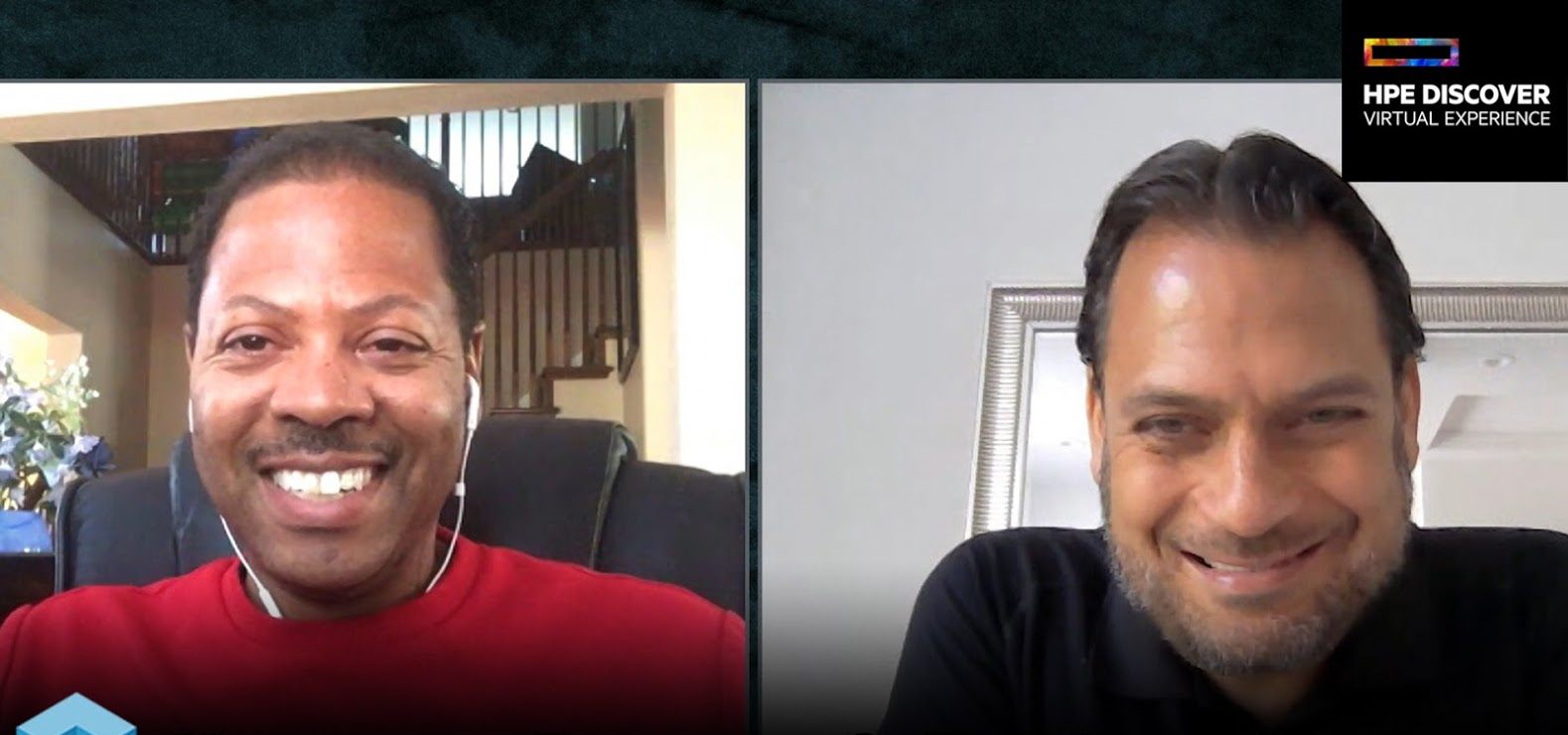 CLOUD
CLOUD
 CLOUD
CLOUD
 CLOUD
CLOUD
The world has rapidly changed in four short months in ways that many people couldn’t have imagined, and technology has been forced to shift alongside it. As organizations navigate new work-from-home demands, solutions that give workers more for less are essential.
Even organizations, such as the District Attorney’s office of San Francisco are having to adapt quickly, not only because of the pressures to stay productive during the COVID-19 pandemic, but because as an organization so reliant on paper, digitization is literally what’s keeping the gears of the office turning.
“In the past, there was a delineation between home and office. Now home is part of the extended office,” said Tarkan Maner (pictured, right), chief commercial officer of Nutanix Inc., while discussing how the COVID-19 pandemic has impacted technologies and how people are taking new approaches to work. “All these new technologies are being delivered in a simpler way. Our new solution frame requires a browser; that’s it. And delivering browser-based application integration to home in a secure way [are] the things that we’ve been waiting for a long time. So this post-pandemic world is going to make us more agile, it’s going to make us more efficient, and hopefully we’re going to do much more with less.”
Maner and Herman Brown (pictured, left), chief information officer of the City of San Francisco’s District Attorney’s Office, spoke with Stu Miniman, host of theCUBE, SiliconANGLE Media’s mobile livestreaming studio, during the HPE Discover Virtual Experience. They discussed technology in the current climate, digitization benefits, and growing partnerships. (* Disclosure below.)
[Editor’s note: The following answers have been condensed for clarity.]
Tarkan, help set the stage for us. Talk to us about this HPE, Nutanix partnership.
Maner: HPE is a very important partner to us. The two companies have been working together for a long time, but especially the last 6 to 12 months. We have this phenomenal relationship around what I call the focus areas of our business — around our digital infrastructure, hyperconverged infrastructure, and on top of that, our solutions from data center to DevOps to desktop services. We’ve built a really interesting relationship with HPE.
Some of our software suites and HPE’s platform are now working through a multicloud channel who are all Nutanix clouds — in addition to it with our telco and XSP partners using their cloud infrastructure, as well as the hyperscaler work we’re doing with [Microsoft] Azure and Amazon Web Services. In addition to our direct sales force and private cloud approach, HPE and Nutanix are working hand in hand in this multicloud operating model. It’s a new relationship in some ways from a multicloud perspective, one of our fastest-growing segments with a phenomenal quarter in the last three months.
Herman, give us a little bit about your personal background and the purview that you cover in the city of San Francisco District Attorney’s office.
Brown: I’ve been with the DA’s office for just over three years, and I come from 20-plus years of private sector experience, some government experience. The government is really no different than any other organization, other than we’re known to be a little bit slower to adopt the technologies, which is why I’m here. I want to help government become more efficient, more productive through the use of technology.
Digital transformation — is that a term that you’ve brought from the private sector to the public sector? What kind of transformations are you going through, and what is it that’s driving the need for transformation in your world?
Brown: I’d love to say that I brought digital transformation or at least that term with me, but I was actually here in the DA’s office or in the city and county’s employment when that terminology came out. We’re essentially a law firm, and firms are historically just paper-intensive organizations. You have court filings and rap sheets — all these physical documents that have to be physically signed and transferred from one attorney to another, to the courts and between police departments and sheriffs and so forth and so on. We just looked at, what are we doing? How can we work more efficiently? As a lot of organizations, we find ourselves to be understaffed for the amount of work that we have going on.
We see roughly 26,000 cases a year. We try about half of those cases per year, and we’re a staff of 320 people. That includes everyone — the attorneys, the paralegals, finance, IT, and investigators. So we need to really embrace technology and be able to help transform these paper-intensive processes into automated digital forms and documents that can minimize the physical transferring of data.
Watch the complete video interview below, and be sure to check out more of SiliconANGLE’s and theCUBE’s coverage of the HPE Discover Virtual Experience event. (* Disclosure: Hewlett Packard Enterprise Co. sponsored this segment of theCUBE. Neither Hewlett Packard nor other sponsors have editorial control over content on theCUBE or SiliconANGLE.)
Support our mission to keep content open and free by engaging with theCUBE community. Join theCUBE’s Alumni Trust Network, where technology leaders connect, share intelligence and create opportunities.
Founded by tech visionaries John Furrier and Dave Vellante, SiliconANGLE Media has built a dynamic ecosystem of industry-leading digital media brands that reach 15+ million elite tech professionals. Our new proprietary theCUBE AI Video Cloud is breaking ground in audience interaction, leveraging theCUBEai.com neural network to help technology companies make data-driven decisions and stay at the forefront of industry conversations.